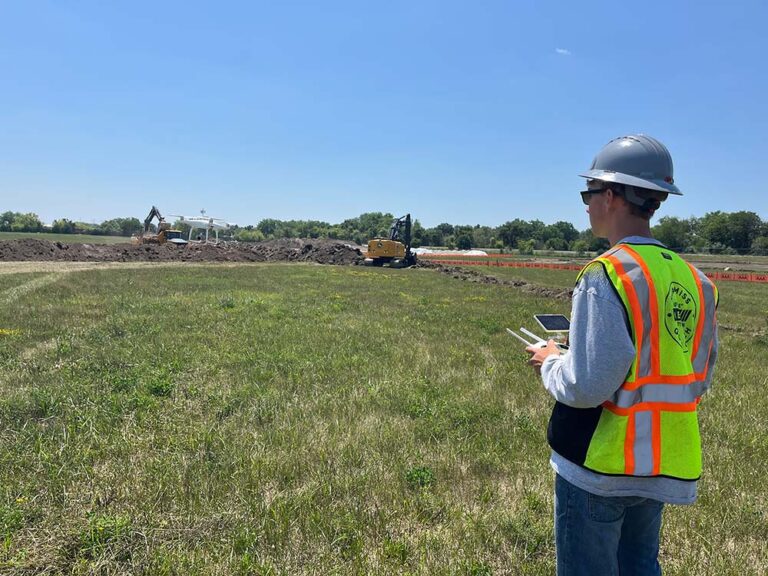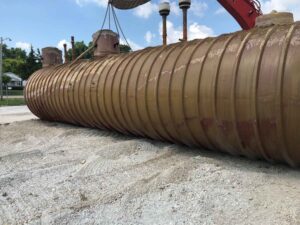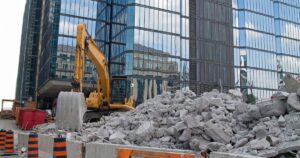An Environmental Site Assessment (ESA) is a process that is used to identify and report on the potential environmental liability or potential risks and hazards of a site. ESAs are typically done prior to a commercial real estate transaction involving an industrial facility as environmental due diligence.
During environmental assessments, an environmental professional like O6 Environmental will investigate the condition of a property. They will gather information about the history and use of the commercial property and evaluate any potential impact from neighboring properties or areas. These impacts could include leaks from underground storage tanks or other environmental concerns.
An environmental assessment is typically done in two phases.
Phases of Environmental Site Assessment
What is the Process of a Phase I Environmental Site Assessment?
Phase I ESA is the preliminary site investigation of the overall process. During Phase I ESA, a team will review historical aerial images and photographs, and will also research government databases to identify any recognized environmental condition. This information will be used to evaluate the commercial property’s history and determine if there is a risk of environmental contamination. The Phase I ESA also includes interviews with key personnel, as well as collecting past environmental site assessments (ESAs).
Phase 1 ESA identifies potential risks and hazards present at the location. This includes identifying any environmental hazards, such as chemical spills or asbestos, as well as structural hazards such as inadequate guard rails or unstable slopes.
Phase I environmental assessment can be conducted in as little as one day, or as long as two weeks, depending on the scope. The Phase 1 Environmental Assessment will provide key information for decisions about the next steps, such as whether to conduct a Phase II investigation or not.
What is the Process of a Phase II Environmental Site Assessment?
Depending on the level of risk, a Phase II ESA may be needed. In this ESA phase, samples of groundwater and soil are taken and will be sent to a lab for analysis. The results are compared to standards set by the CCME for Federal Sites. The Phase II ESA can help verify the presence of contamination, and it can help to determine appropriate environmental remediation strategies.
A Phase II ESA is often recommended as a supplement to a Phase I Environmental Site Assessment. If a Phase I assessment uncovers a significant risk of contamination, a Phase II assessment will be needed to confirm that the site is safe. This will help to reduce liability risks to human health and the environment.
A Phase II Environmental Site Assessment is a comprehensive investigation that determines the presence of hazardous substances on the surface of a property. During this stage, soil samples are collected, and analyzed to see if they are contaminated. Aerial imagery is also inspected to see if it identifies any environmentally impacting operations. This will help to identify aboveground crude oil tanks, gas stations, and other facilities.
What About Phase III ESA?
The Phase III ESA is generally required by regulatory agencies. These agencies will oversee the assessment and will oversee the efforts to remediate and clean up hazardous material. During the Phase III investigation, the team will review the Phase 1 and Phase 2 ESAs to determine the best remediation strategy. They will then design the remediation plan and implement it.
A Phase III investigation is usually carried out by an environmental engineer, who will have a thorough knowledge of the site and its history. The Phase III assessment will provide a detailed ESA report that will outline the steps taken to clean up the site and provide plans for future site investigations.
The Phase III Environmental Site Assessment is a comprehensive investigation that normally involves the evaluation of alternative cleanup methods. Depending on the type of environmental contamination, the Phase III investigation can take months or years to complete. It will also involve intensive sampling, testing, and monitoring. The Phase III assessment will identify the most cost-effective cleanup methods and will outline the steps that have been taken to clean up the site. If you are going through an ESA and are in need of remediation services, hazardous waste disposal, or industrial cleaning, O6 has got you covered.


